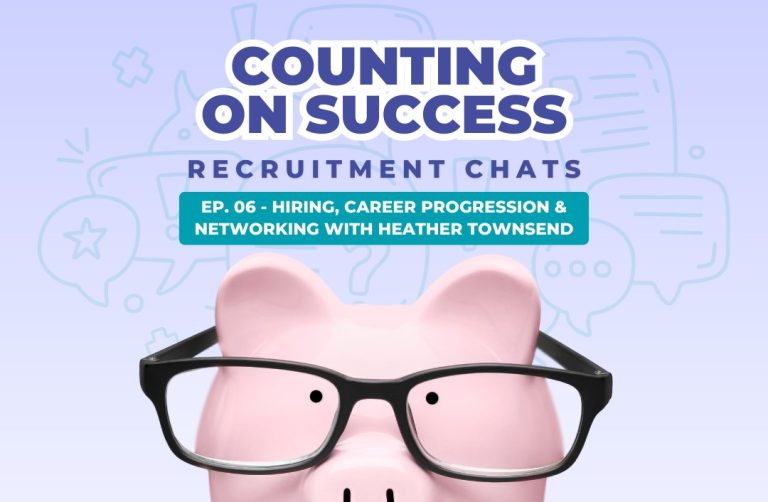How to Retain New Team Members & Prevent Quitting
You may be wondering why you would need to prevent your new starter from quitting — but did you know that 22% of staff turnover takes place within the first 45 days of employment? This statistic proves just how important those first few weeks and a proper onboarding strategy are to employee retention. So, how do you make the right impression to avoid this from happening to you?
First off, it’s important to know why people are quitting so early on and why retaining new employees can sneak up on you. The majority of people quit within the first few weeks because they:
- Feel as though they can’t fulfil the role (32%)
- The role isn’t what they expected (19%)
- They don’t fit in with the firm’s culture (18%)
- They don’t fit in with the team (10%)
The above can not only lead to unwanted resignations, but also cultivate quiet quitting (which might feel like it comes out of nowhere). The good news is that all of these reasons for quitting can be prevented. With the right amount of time and effort during both the recruitment process and the first three months of their role, you can make sure that your new hire fits seamlessly into your team and firm.
Here are five ways to help you retain your new starters.
1. Don’t rush your recruitment
You always want to hire the best person for the job — but when the pressure’s on and the role needs filling, it’s all too easy to start cutting corners. However, the result of said cutting is a lot of time and money wasted if you end up hiring the wrong person.
To avoid falling into this trap, you need to get really specific about what skills and traits you’re looking for in a potential candidate. Get clear on what you are looking for in someone for each role you hire for — what are the must-haves and what is desirable? Knowing what you’re willing to compromise on is just as important as what is non-negotiable.
Here are some helpful steps to include in your recruitment process:
- Create a very detailed job description for the vacancy. This should include any goals and targets they will be expected to meet, as well as their roles and responsibilities.
- Take the time to fully check their references.
- Develop an interview plan that will require candidates to prove they have what it takes for the job. Skill testing and behavioural profiling are highly recommended as part of your plan.
- Don’t stop at one interview. This gives you more than one opportunity to make sure this is the right fit for both of you. (Note: We suggest having no more than three interviews so as not to draw out the process too long.)
- Consider a paid trial day. This allows you to see how well they fit in with the team (and to get your employees’ opinions).
- Have an onboarding plan ready. Candidates may ask about your onboarding process (training, reviews, etc) in interviews and .
2. Create short-term goals for new team members
We all know how difficult it can be to start a new job. But how do we prevent our new team members from feeling overwhelmed with so much to learn? A great way to prevent overwhelming new staff is to start by setting them realistic short-term goals as part of their induction. These can be daily or weekly objectives that give them something manageable to aim for — rather than intimidating them with bi-annual targets. As they find their feet and become more comfortable in their role, these targets can then become fortnightly and monthly objectives.
3. Schedule regular performance reviews
Performance reviews are a great way to find out how your new beginner is settling into their role. By setting up 1:1 meetings throughout their probation period, you’re creating regular opportunities to discuss their progress whilst also ironing out any issues. Over time, you can also use these meetings to set more challenging targets for your new starters — particularly as they approach their final probationary weeks.
4. Develop a clear training plan for new starters
Having a clear training plan in place is a great tool for both you and your new starter. By outlining what they need to achieve in their first 6 months, you can easily track their performance as they settle into their role within the team.
This plan should include:
- Technical training to teach them about the firm’s software and key processes
- Introductions to other staff members and key stakeholders
- 1:2:1 meetings with their line manager
- Shadowing sessions to assess their progress
- Mentoring sessions to check their progress and iron out any issues
- Learning on the job to gain first-hand experience
You could also provide your new starter with some resources to get stuck into before they start their official training. Help them hit the ground running by giving them:
- A map of the office
- Written descriptions of their team members and key stakeholders
- Information about the firm and any FAQs about the office they will be working in
- Relevant business books
- An outline of their training plan
- Assign them an office buddy
5. Make them feel like part of the team
No one likes feeling like the ‘newbie,’ but how can you help prevent new starters from feeling this way? The important thing is to make sure they feel settled. Assigning a buddy to them is also helpful (and can take some pressure off of you!). If they feel comfortable with their peers, they’re far more likely to get stuck in and ask questions. Without the fear of getting things wrong or feeling like the odd person out, they will then start performing to the best of their ability.
Feeling like part of the team can determine whether a new hire ‘loves’ or ‘leaves’ a job, so focus on creating a welcoming culture within your firm.
Invest time into your new team members
From their first interview to their 12-week review — each of these five methods has shown us just how important it is to invest time into retaining your new starters. By providing them with the proper support and resources, your new hires can settle into their role with relative ease and success (not to mention that they’ll be happier, more productive and, hopefully, loyal to your firm for the long term).
The important thing to remember is that technical skills can be taught but first impressions last forever! Prioritise making your new starter feel welcome with good a onboarding strategy to inspire loyalty as you grow your team.
**This blog post was originally published on the Accountants’ Growth Club website.
*Curious about Gen Z?
Check out the Counting On Success podcast episode about recruiting and retaining Gen Z accountancy talent.
Remote working is making this easier
For as long as taxes have been collected, there has always been a certain percentage of workers who can get away with doing the bare minimum. As far as I know, it has always been the case. The rise of remote labour has just made it simpler for low-level workers to avoid detection by upper-level management. It's no surprise then that resigning in secret is less of a hassle without anyone in upper management noticing.
Be careful of the impact on existing employees
Conflict in the workplace can also be caused by people departing quietly. After all, animosity will rapidly grow if everyone in the team isn't doing their part. Be wary of this as it can cause your best employees to become dissatisfied with their current circumstances and seek employment elsewhere.
How to combat quiet quitting
To what extent does your company suffer from "quiet departures," and what steps may be taken to prevent them? To determine why employees are leaving quietly, you should start with the company's leadership and culture and ensure you adhere to the following tips:
Embrace a hybrid model of working
The most senior employees in your company are often accustomed to putting in long hours behind a desk. They may say things like, "Get people back into the office" as a solution to the problems with employee engagement and morale. While appealing at first, this strategy is likely to cause more quitting than content.
Our candidates report a strong desire for work-life balance as one of their top priorities. They would like to "have their cake and eat it too." That is, they would like to have the option of coming into an office some days but working remotely on other days. Indeed, several workplace studies corroborate this. Some recent statistics include:
- Deloitte found that by the year 2020, over half of all professionals placed the highest importance on remote work and flexible work hours.
- Deloitte Australia conducted a poll in 2022 and discovered that 93 percent of respondents valued their own physical, emotional and mental health as highly as their own financial compensation.
- When given the option, 78% of employees would rather work a blended schedule or from home.
Take care of your partners and top earners first
Your leading fee earners and partners typically work long hours. They may have put in as many hours as necessary to get the job done, no matter the cost to their health or personal life. How many of your friends and associates have been divorced? Or make it seem as though they gave up their lives and their waistline for the cause? Is it any surprise that many of the younger workers are looking up and not aiming to be the next partner in your firm?
In many companies, the culture of a team or office is determined by the example set by partners and top fee earners in terms of work hours and limits. But if junior staff see that their superiors value self-care — for example, by taking proper time off while on vacation or rarely working on weekends — that will waterfall down the rest of the company. Younger workers are less likely to quietly quit if they believe that upper management values their time off.
Allow workers their vacation time
Quiet quitters advocate for strict time limits so as not to toil away at the office on nights, weekends or holidays. Therefore, for businesses to prevent quiet resignations, they should reduce the number of times young workers are asked to "pull an all-nighter at work" or dedicate part of their weekends to company business. To avoid staff needing to respond to urgent emails on the weekend or after hours, scheduling tools can be implemented. A scrutiny of the normative demands made on staff members should also be taken.
Workers are not resources to be overworked, even though they must be compensated for their time. The business model of any company that habitually expects its workers to charge for more than six hours per day has to be examined closely.
Food for thought on your approach
Increased productivity is just one of the many advantages of hybrid work arrangements, but the lack of strong management and leadership in an organisation is immediately brought to light. Employees may soon begin to feel demoralised and their work to be meaningless due to ineffective management and leadership.
According to Gallup's study, a large percentage of young workers do not see their jobs as meaningful. This is the generation that for 2-3 years of their formative career have been working from home for huge chunks of time. It's really no surprise that many of our younger workers are contemplating quitting quietly, given the reality that many tax practices have a matrix structure in which ties between senior managers and their direct subordinates are fragile.
Hybrid work styles necessitate a higher level of planned and deliberate conversation amongst coworkers. Since employees are not constantly present, management by walking around is ineffective. For this reason, an audit of the frequency and timing of internal company communications is necessary. So make sure to look at everything from how upper-level managers talk to their subordinates to how team and project leaders and counselling managers talk to their subordinates. After all, it's tough to fade away if you have reason to feel that someone is keeping tabs on your progress. (To be clear, this is not about micromanaging but actually knowing what is going on in the workplace and showing care for your team.)
Don’t let quiet quitting sneak up on you
Quiet quitting is a real phenomenon that can have serious consequences for your team’s success. As a manager, it is up to you to recognise the signs and take steps to address them. By creating an environment that encourages open communication and building strong relationships with your employees, as well as providing clear expectations and feedback, you can help create a workplace where everyone feels valued and motivated. With these strategies in place, you can prevent quiet quitting before it starts and/or mitigate its effects if it does occur.
The original version of this article appeared on our sister company’s site.







